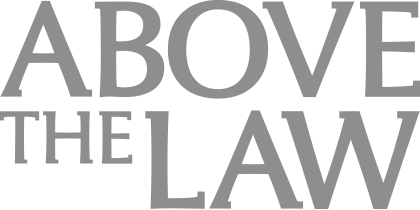First Monday Musings By Dean Vik Amar: Reflections On The 2018 AALS Meeting
Providing information that is relevant to prospective law students is only part of what law schools need to be doing as they try to get a better handle on future admissions trends.

Law school apps are up, and some bar exam pass rates are too!
Last month, the Association of American Law Schools (AALS) — the single largest organization that seeks to bring together hundreds of law schools and thousands of law professors — held its annual meeting. When I was a law professor but not a dean, I sometimes did not attend the annual meeting; to be honest, my decision whether to attend was based in significant part on how many law professor friends and colleagues from around the country with whom I wanted to visit were going. Now that I am a dean, I more or less have to go each year, and that turns out to be a beneficial thing for me.
For this event represents a pretty rare occasion at which large numbers of deans, in plenary and breakout sessions, have the chance in person to collectively discuss their views of the past, present, and future of legal education. Much of the deans’ discussion focuses on how best to prepare students for the profession today, and includes topics such as experiential learning, law school classroom assessments, faculty hiring trends, and the like. But perhaps unlike several years ago — and I think to the good — much of the deans’ attention is not just on the three years of law school itself, but also on what comes after and what comes before law school. In my remaining space below, I’d like to comment on a few aspects of these discussions.
Although the outside world (including the Above the Law website) doesn’t always appreciate it, most deans are very focused on minimizing the debt with which law students graduate, and on maximizing the kinds of things people can go on to helpfully use their law degrees to do. One recurring topic among many deans last month was the bar exam — not just how to assist students to prepare for it, but more fundamentally whether the bar exam, in its current forms, is a particularly valid or sensible way to regulate entry into the profession. To be sure, the discussion is often loudest concerning California’s bar exam, with its higher-than-average “cut score” (passing threshold), and if California’s bar passage rates bubble back to where they were five years ago (as they may have begun to do for at least some California schools), the fervor to reform entry to the profession may die down. But, as I have written elsewhere, we as a profession really should ask ourselves whether the bar exams we administer really do test the skills that we most prize in practicing lawyers, or instead whether the current exams overweight memorization and lightning-quick organizational and writing abilities.
As long as we do have bar exams — and I expect that we will have them in roughly the same form we do now for at least the next several years –information about each law school’s pass rates should be easy to access and easy to understand for the benefit of prospective law students (among others). And here I am happy to report that the American Bar Association (ABA) has continued its recent trend (for example, in employment outcomes and admissions data) of improving consumer information by requiring law schools to promptly and prominently post on their websites easy-to-understand statistics depicting first-time and ultimate (that is, after more than one attempt) bar passage rates for the past few years.
Up until now, bar passage data has been presented in more summary form, and has been buried in longer reports that were well long after-the-fact and where bar pass data may have been easily overlooked by the viewing public. The requirement of a new, separate reporting form just when into effect, and in the next month or so the data should be easily viewable on all of the websites of virtually all law schools in the country, in time for this year’s crop of law school applicants to consider as they make their decisions about where to attend. As Barry Currier, managing director of accreditation and legal education for the ABA was quoted as saying: “The reason for moving the bar results to a separate questionnaire — that is, taking reporting results out of the annual questionnaire [that contains much other information and that is not available for many extra months] — is to allow us to report more current results that should be more useful to potential students, who are the primary audience for . . . disclosures, and others who follow and study law schools.”
But providing information that is relevant to prospective law students is only part of what law schools need to be doing as they try to get a better handle on future admissions trends. Much ink has been spilled on the question of whether law schools should accept applicants who have not taken the LSAT, but who have taken other standardized tests or no standardized tests at all. Discussion of this issue is healthy, though probably not momentous — almost every law school will continue for the foreseeable future to admit the overwhelming majority of its entering class from applicants who have taken the LSAT. But for the first time in my memory, the AALS is also focused much more broadly on why and when young folks do or don’t decide to pursue a career in the law. The AALS has commissioned a very large study, called Before the JD, to examine these questions, with some meaningful results due out this summer.
Sponsored

Generative AI at Work: Boosting e-Discovery Efficiency for Corporate Legal Teams

AI Presents Both Opportunities And Risks For Lawyers. Are You Prepared?


Law Firm Business Development Is More Than Relationship Building
While I would not want to speculate about what the ultimate findings of the study will be, I think many deans share my intuition that law schools have not been energetic enough in educating young people — in college, in high school, and even before that — about what benefits a career in the legal profession really affords, and how those benefits stack up against other possible career choices. There have been plenty of misleading and inaccurate media depictions of the economics and the mental health of the legal profession over the last decade. I am not remotely suggesting that law school is for everyone, or that every law school is a good investment for anyone who can get admitted to it. I don’t believe either of those things. But I do believe that many news stories about law school and the legal profession paint with way too broad a brush, and that each law school — and organizations like the AALS itself — need to better combat the misperceptions that many young persons (and parents and high school and college teachers and counselors, as well) have about the costs and benefits of law school today.
The uptick in national law school applicant volume this year (running about 5-10% currently) may reflect the beginning of such an educational effort. So too does the recently announced joint effort between the AALS and the Law School Admissions Council (LSAC) — the organization that produces and administers the LSAT exam and that facilitates data coordination for all law school applicants — to undertake “an integrated digital strategy for better communicating with prospective law students before and during college, when they may first be considering pursuing an advanced degree.” I think these are helpful and hopeful steps, but we law schools collectively have much more work to do on this. And it very much helps for deans to talk to and learn from each other on these matters.
 Vikram Amar is the Dean of the University of Illinois College of Law, where he also serves the Iwan Foundation Professor of Law. His primary fields of teaching and study are constitutional law, federal courts, and civil and criminal procedure. A fuller bio and CV can be found at https://www.law.illinois.edu/faculty/profile/VikramAmar, and he can be reached at [email protected].
Vikram Amar is the Dean of the University of Illinois College of Law, where he also serves the Iwan Foundation Professor of Law. His primary fields of teaching and study are constitutional law, federal courts, and civil and criminal procedure. A fuller bio and CV can be found at https://www.law.illinois.edu/faculty/profile/VikramAmar, and he can be reached at [email protected].
Sponsored

Curbing Client And Talent Loss With Productivity Tech








